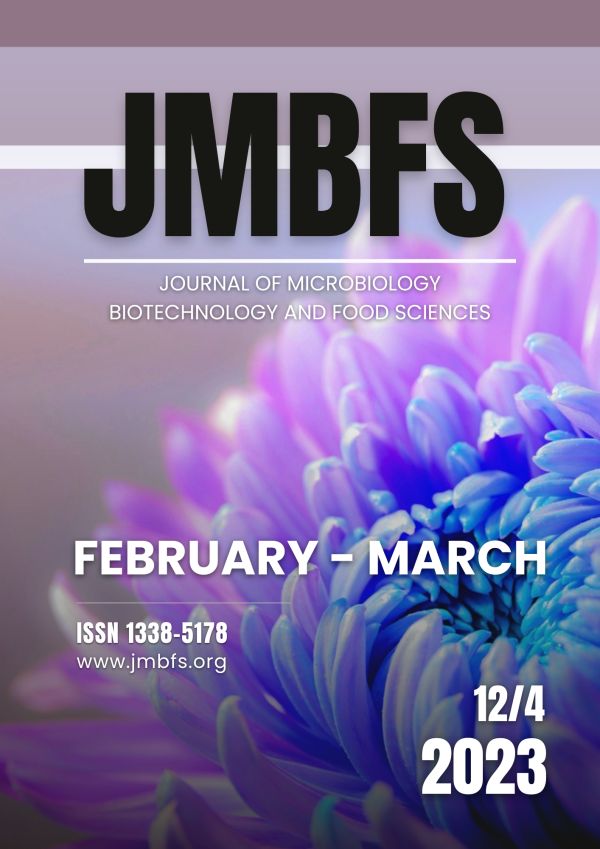BIOGENIC SYNTHESIS OF SILVER NANOPARTICLES FROM ASPERGILLUS ORYZAE MTCC 3107 AGAINST PLANT PATHOGENIC FUNGI SCLEROTINIA SCLEROTIORUM MTCC 8785
DOI:
https://doi.org/10.55251/jmbfs.9387Keywords:
Extracellular enzymes, AgNPs, Aspergillus oryzae, Antifungal, Sclerotinia sclerotiorumAbstract
Phytopathogen including Sclerotinia sclerotiorum is a major problem for agricultural crops. Being safe, antifungal, and environment friendly, silver nanoparticles (AgNPs) are the first choices to combat phytopathogens. In view of this, the present study was designed to formulate AgNPs from Aspergillus oryzae MTCC No. 3107. Biosynthesis of AgNPs by A. oryzae was investigated using cell-free filtrates from fungi cultivated in potato dextrose broth (PDB) and amylase production media (APM). Fungal production media harbour inducers which upregulate secretion of specific enzymes. Amylase is known to catalyze the bio-reduction process. The cell- free filtrates containing extracellularly secreted fungal amylases when exposed to the metal salt solution (silver nitrate) at 1mM concentration, silver ions were reduced to zero oxidation state forming stable nano silver. The colour change was observed and the formation of AgNPs was further characterised by UV–vis spectrophotometry by scanning from 300-700 nm wavelength. Transmission electron microscope characterization revealed a size of 40nm. Further, the FTIR analysis identified the key functional groups involved in the stabilization and capping of AgNPs. Moreover, XRD analysis was done to identify the diffraction pattern in AgNPs. Antifungal effect of synthesized AgNPs on phytopathogen S. sclerotiorum MTCC 8785 was studied using variable concentrations of amylase mediated AgNPs. 100 percent inhibition was observed at 100 μg/ml concentration when compared to positive control.
Downloads
Downloads
Published
How to Cite
Issue
Section
License
Copyright (c) 2022 Tanya Gupta, Juhi Saxena

This work is licensed under a Creative Commons Attribution 4.0 International License.
All papers published in the Journal of Microbiology, Biotechnology and Food Sciences are published under a CC-BY licence (CC-BY 4.0). Published materials can be shared (copy and redistribute the material in any medium or format) and adapted (remix, transform, and build upon the material for any purpose, even commercially) with specifying the author(s).





